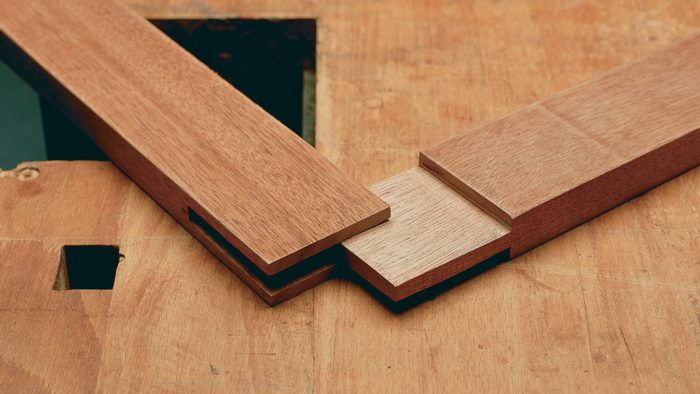The Slip Joint
This basic joint of the trade goes together fast and is designed to last
Synopsis: Also called an open mortise and tenon, the slip joint has been around since at least Tutankhamen’s day. writes Frank Klausz. It’s easy to assemble and holds up to a lot of stress. Frank Klausz explains how to build the jig he uses on his tablesaw for making slip joints and details how to cut the mortises and the tenons, step by step. He also tells you how to make slip joints by hand.
Some years ago, I went to see a show at the Metropolitan Museum in New York that featured artifacts from the tomb of the Egyptian king Tutankhamen. On display was a chair built around 1350 B.C., on which I could see a slip joint. There are reasons this joint has been in use for so long. Also called an open mortise and tenon, the slip joint is hard to beat for ease of assembly. And because of the large gluing area where the pieces meet, a slip joint holds up to a lot of stress.
I build and repair furniture for a living, so I’m interested in not only doing a job well but also doing it efficiently. Unless an architect or designer has supplied me with very detailed drawings, it is often up to me to decide what joinery to use for a given job. The slip joint is one of my favorites. A doweled butt joint may go together faster, but it’s not nearly as strong.
Where to use it? If I have a cabinet that calls for simple frame-and-panel doors, where rails and stiles are square-edged and the doors are inset, I don’t have to think twice about which joint to use. For overlay doors, where the edges will show, I’d still use a slip joint, although I’d ask the clients first whether they had any objections to seeing end grain on the outside of the stile.
When I make a chair, I use this joint for the slip seat that gets upholstered and secured within the chair rails (see the photo above), because it’s the best and most appropriate joint for the job. I don’t do a lot of millwork, but if I were making window sash, I’d use a slip joint for the stiles and rails, even if the inside edges were shaped to a cope-and-stick profile.
What I really like about the slip joint is how fast it is to cut and assemble. I use a jig that I designed several years ago for use on my tablesaw. If you don’t have a tablesaw, you can cut this joint by hand or with a bandsaw, as I’ll explain later. With either of these methods, take your time. If you use a bandsaw, make sure that the blade doesn’t wander.
From Fine Woodworking #115
For the full article, download the PDF below:
Fine Woodworking Recommended Products

Pfiel Chip Carving Knife

Marking knife: Hock Double-Bevel Violin Knife, 3/4 in.

Veritas Standard Wheel Marking Gauge





















Log in or create an account to post a comment.
Sign up Log in